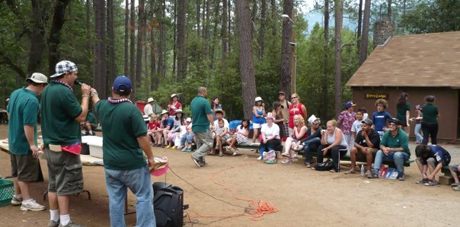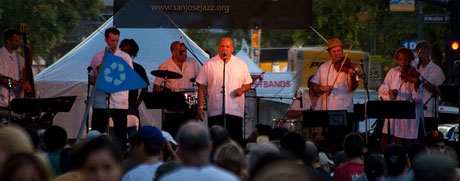
San Jose residents have been heading south to Family Camp, located not far from Yosemite, for more than 30 years.
Did you go camping over the three-day weekend? Camping is a time to enjoy nature and the adventure of the great outdoors. Last week, I attended a community meeting about San Jose Family Camp. There were approximately 25 residents who all appeared to be Family Camp boosters. They expressed support for Family Camp, recalling fond memories that for some dated back approximately 30 years.
The City of San Jose started providing this campground in 1974 and it is located just outside of Yosemite. Family Camp is not in the City Charter. However, neither are crossing guards for schools, which have been provided since 1944. The city of San Jose does not own the land; instead it leases the land from the federal government and has built structures for camping—much like some ski resorts that lease land from the federal government and build structures. Of course, if the fees for skiing do not cover the costs to operate and maintain the ski resort than it would cease operations.
By direction of the City Council last year, the nightly rates were increased for campers so that the city could get the camp to be revenue neutral, or 100 percent cost recovery. In 2007, Family Camp was 67.4 percent cost recovery and this year the forecast is for 95.7 percent. On average, 5,000 people partake in Family Camp each year and 70 percent of them are San Jose residents.
Getting to cost recovery is good, because this would remove the subsidy from the general fund. However, the camping structures need to be repaired and modernized. That money could come from the general fund, but it is unlikely since those dollars compete with police and library staffing. The Measure P bond fund—passed by voters to pay for park improvements—can only be used on city-owned land, so that rules out spending the money three hours away from San Jose.
This leaves the Construction and Conveyance Tax (C&C), which is generated from the buying and selling of property in San Jose. These funds are restricted in the City Charter for park equipment, library materials and fire station equipment. A small portion of C&C revenue funds park maintenance, but the bulk is put aside to pay for physical things. Allocating these revenues to Family Camp would remove funds from replacing park equipment, new books or computers for libraries or new equipment for a fire truck. The challenge for Family Camp boosters is to explain to San Jose residents who do not utilize this unique facility on why tax revenue is better spent outside of San Jose instead of within San Jose.
To the credit of the Family Camp boosters, they have volunteered many hours to making improvements at Family Camp by donating material and labor, including doing advanced electrical work. However, there is a limitation to their good deeds. That limitation is an estimated $9-16 million in improvements to physical structures at Family Camp.
The standard alternative (like many other things in San Jose) could be to rely on voluntary contributions from San Jose residents, camp lovers and corporations. However, $9-16 million is a much higher bar than $6,000 for the fountain at the Municipal Rose Garden, or $60,000 city-wide for dog poop bags as examples. From my perspective, it would be fine by me if a company logo was required on each camping tent for monetary donations.
Another alternative would be to partner with other cities in the county to make the improvements, so that we have one joint facility. Yet another option may be charging campers a fee above and beyond the 100 percent cost recovery and committing those funds to the capital improvements, which would take a long time and possibly discourage campers.
Finally, the last option would be to walk away from Family Camp and let it close. If no other organization wanted to take over the camp, the city of San Jose would be on the hook for dismantling the camp, which is estimated in the millions. If this were to transpire, I would suggest not answering the phone when the Feds call.
Sometimes I am approached with an idea from a person who thinks the city should provide a new service. I think it is best to manage expectations and let people know up front that adding a new service will not happen while the current portfolio of services is being cut.


